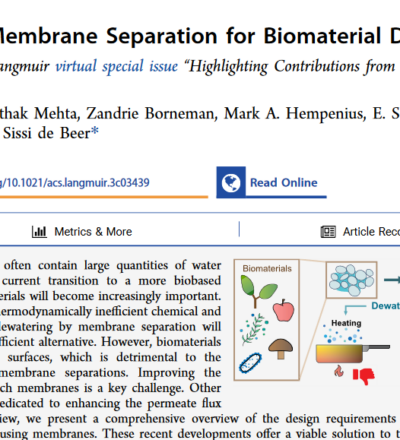Biomaterials often contain large quantities of water (50−98%), and with the current transition to a more biobased economy, drying these materials will become increasingly important. Contrary to the standard, thermodynamically inefficient chemical and thermal drying methods, dewatering by membrane separation will provide a sustainable and efficient alternative.
However, biomaterials can easily foul membrane surfaces, which is detrimental to the performance of current membrane separations. Improving the antifouling properties of such membranes is a key challenge. Other recent research has been dedicated to enhancing the permeate flux and selectivity.
In this review, we present a comprehensive overview of the design requirements for and recent advances in dewatering of biomaterials using membranes. These recent developments offer a viable solution to the challenges of fouling and suboptimal performances.
We focus on two emerging development strategies, which are the use of electric-field-assisted dewatering and surface functionalizations, in particular with hydrogels.
Download your free copy
Our publications are free to access. Simply provide your first name and email address to download.
